No, this isn’t your typical bolt-action. There is a cartridge, and a bolt nob, and even a bolt body, but this is a bolt-action pen. And the appeal is magnetic.
If you’re into EDC ephemera, this is for you. As someone who writes about guns, I know I write for a relatively small group of readers. Most all of them are gun nuts. It is a smaller percentage, for sure, than the number of actual gun owners in this country.
And Keen Insights is a column about knives. We aren’t specifically trying to cover knives that appeal to guys who own guns, but that is where we end up. But knives have an even broader utilitarian side than guns, so they have a widespread appeal.

And here we are introducing pens. There’s a large crossover between knives and pens. A lot of knife companies make their own pen lines. And they aren’t all overtly tactical self-defense pens, either (though those do exist).
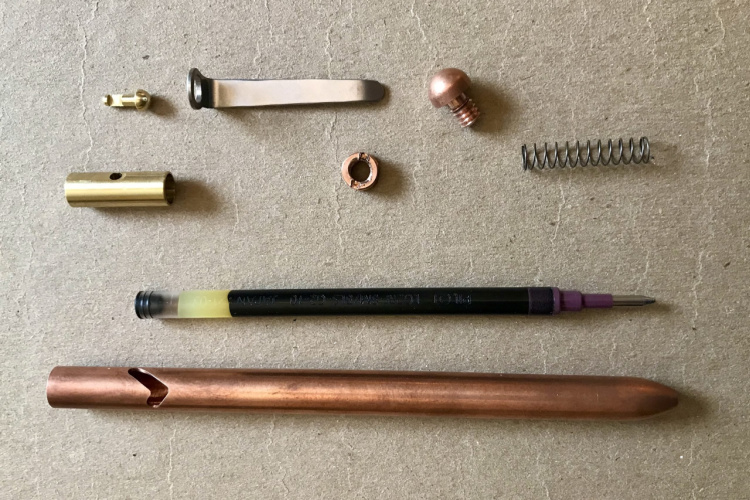
But the best are still made by hand. And that’s where Honey Badger Arsenal comes in. These bolt-actions are addictive. They’re also rock-solid writing utensils.

It’s All About the Bolt
This design isn’t unique to Honey Badger Arsenal. A quick google for a bolt-action pen will bring up numerous designs. They are actually quite common—and much less complicated than the ratcheting push-top click pens that sprang up after World War II.

The first of those types were invented way back in the 1880s. The ink cartridges, though, were less effective, so it took some time to catch on. The bolt action is—in a way—an oddly primitive concept, but—at least in this case—a simple concept that is flawlessly executed.
The idea is simple enough. Inside the barrel, an ink cartridge rides on a spring. That spring pushes the cartridge back up inside the barrel until you push it down.
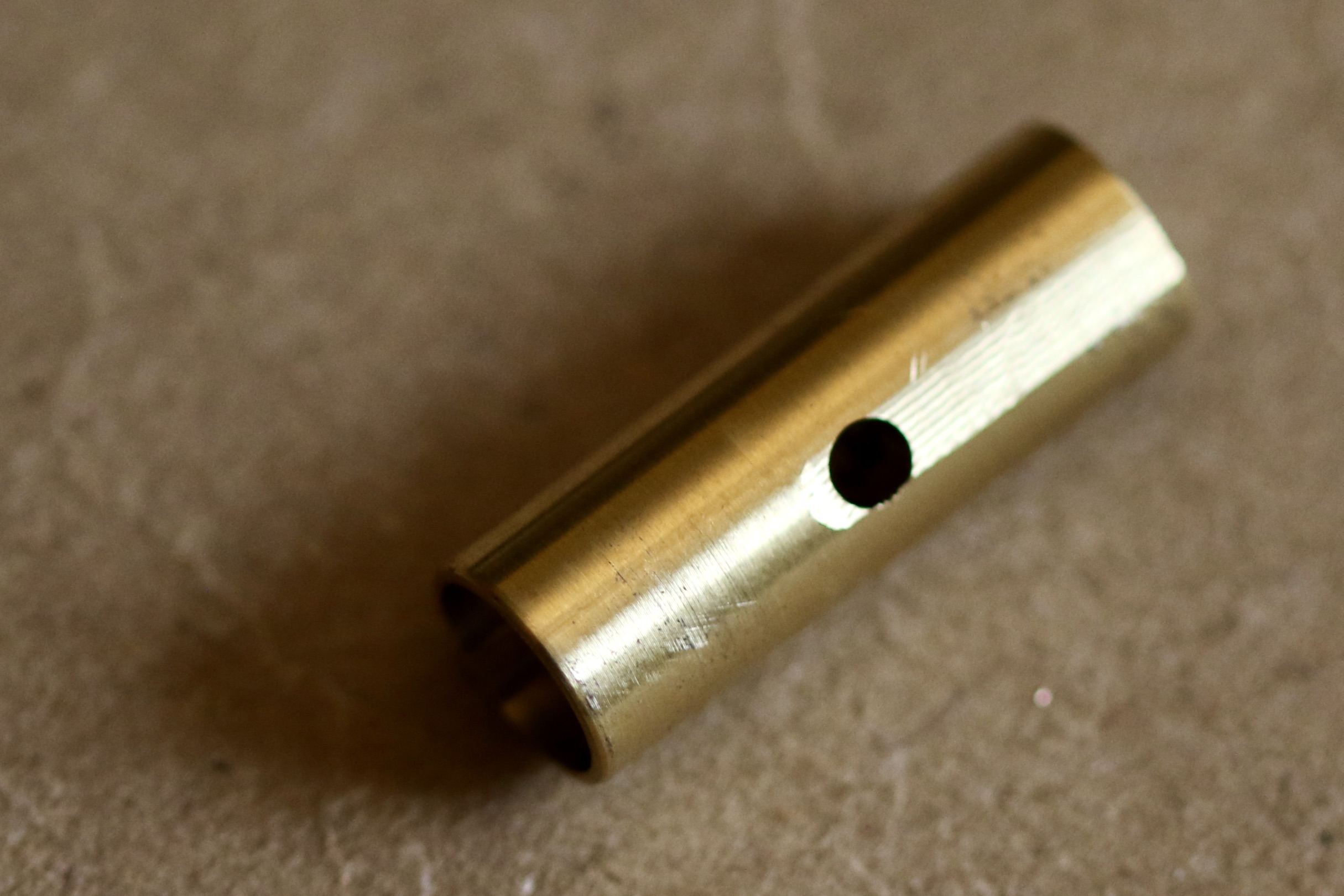
The Rifle Metaphor
There is a bolt on the upper portion of the barrel that rides in a milled channel. Pressing the bolt down will compress the spring and expose the tip of the pen. Once depressed, the bolt can catch in the J-shaped channel, and the pressure from the spring will stop it there and hold it secure for writing.

The bolt—this pen has a brass bolt head in a brass inner sleeve (just for that last little bit of contrast)—offers a faintly audible click as it slides in place and back out.

The process makes for a good fidget toy, too. For those of us who need to keep our hands busy, the bolt on a bolt-action pen is ideal. It may be slightly too loud for the typical classroom setting, at least if you are letting the spring slap the bolt back, but you can guide it back and forth with a slight bit of pressure and prevent it from making a ton of noise.
The bolt-action of the pen locks it in the writing state, or—when the bolt is out of battery—in the retracted state. In this way, it is very similar to a bolt-action rifle. Through the bolt, lock it down, and you’re ready to go.
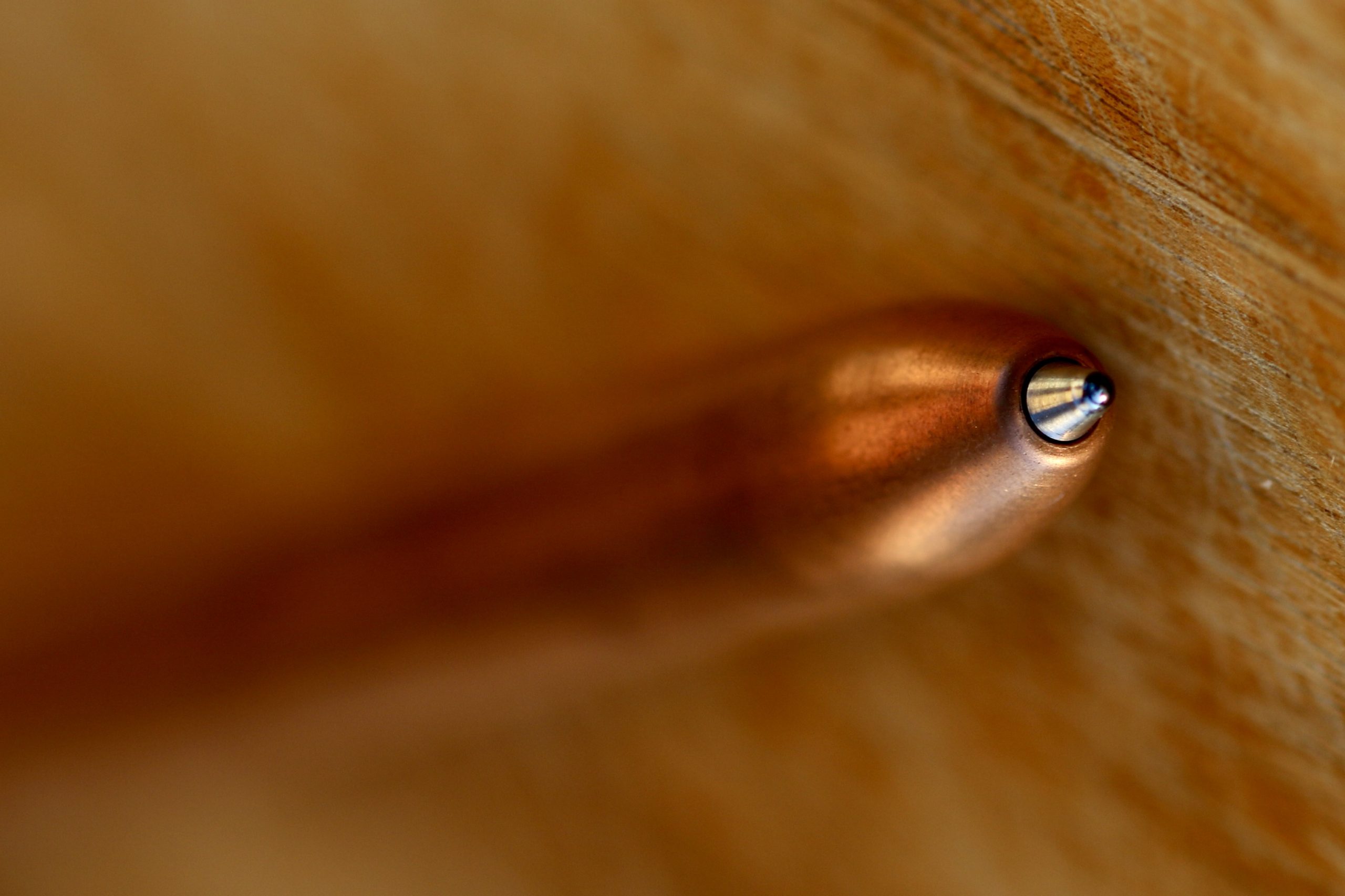
Writing with the Honey Badger Arsenal Bolt-Action Pen
Almost all of the writing I do now is done on MacBook. Like the pen, there’s an appeal to the sleek aluminum case of a MacBook. But it doesn’t feel handmade. And I couldn’t afford a custom-made Mac, anyhow.
But I still do a surprising amount of writing with a pen. I regularly work with writers, clients, and gun companies, and—for more than a year now—this means my computer is tied up with Zoom. I can’t see people on screen and effectively take notes, so I write. By hand. Like a Luddite.
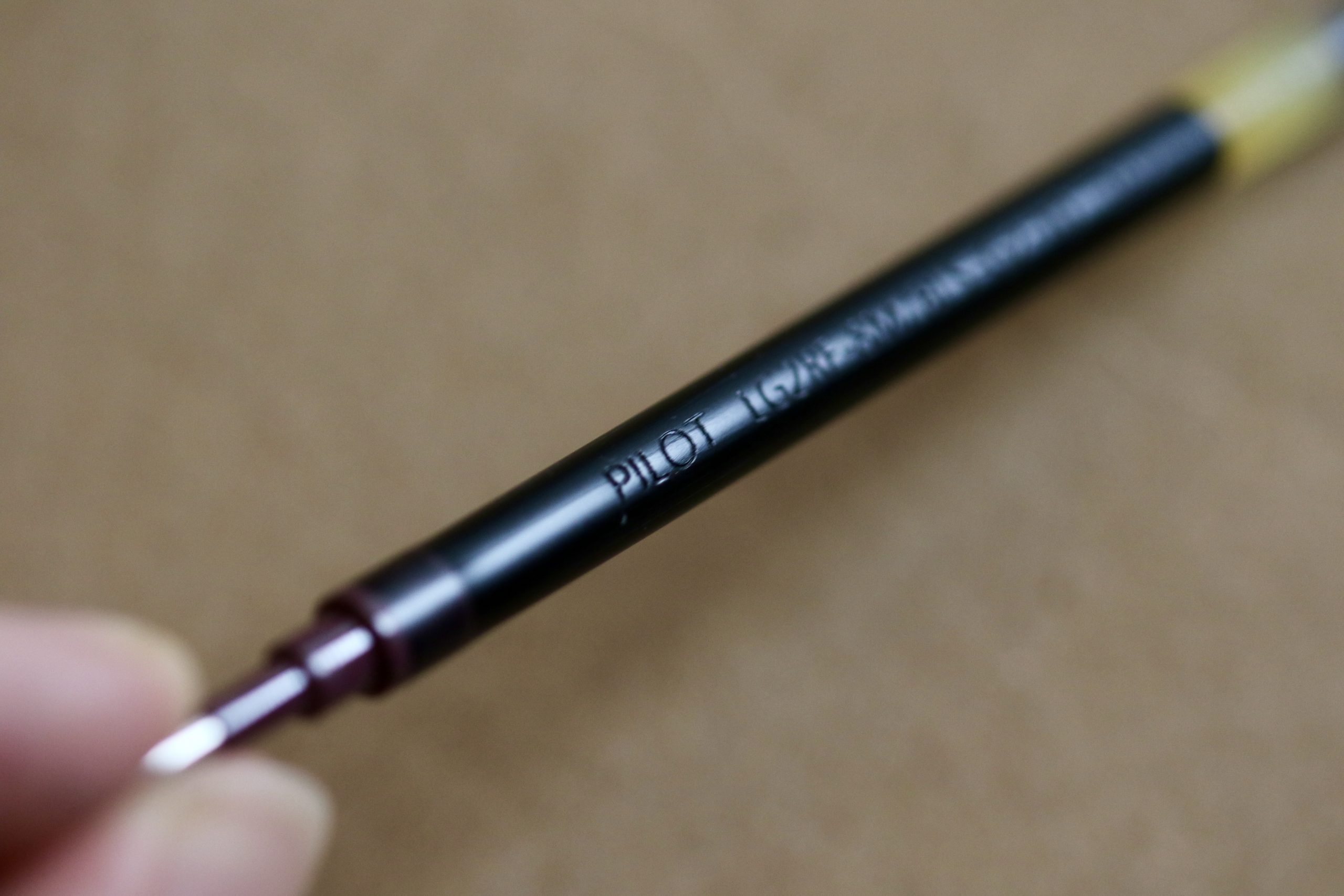
I fill notebooks fast. My weapon of choice here is the Pilot Precise V5 Extra Fine Rolling Ball pen. These jokers write at the speed at which I think. They’re fragile, though. The nibs are easily bent.
The HoneyBadger Arsenal pen can take a beating, for sure. And they can take a variety of inserts. This one came with a Pilot G2 cartridge that makes use of Pilot’s roller ball for ink dispersion.
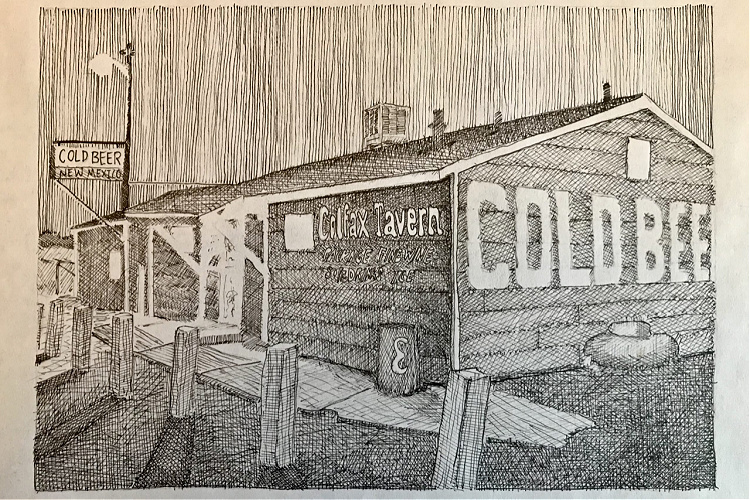
Pen geeks like Pilot. If you want something that can write underwater, or over blood or oil, the Fisher Space Pen inserts can also be used. The Fisher inserts are great for any kind of adverse condition—even outer space.
For me, the Pilot cartridges are a solid win. I used to have to translate web pages to order Pilot refills from Japan—that’s how much of a pen snob I am—but now they’re available just about anywhere that sells office supply type things.

Bolt-Action Options
These pens come in a variety of outer materials: brass, copper, titanium.
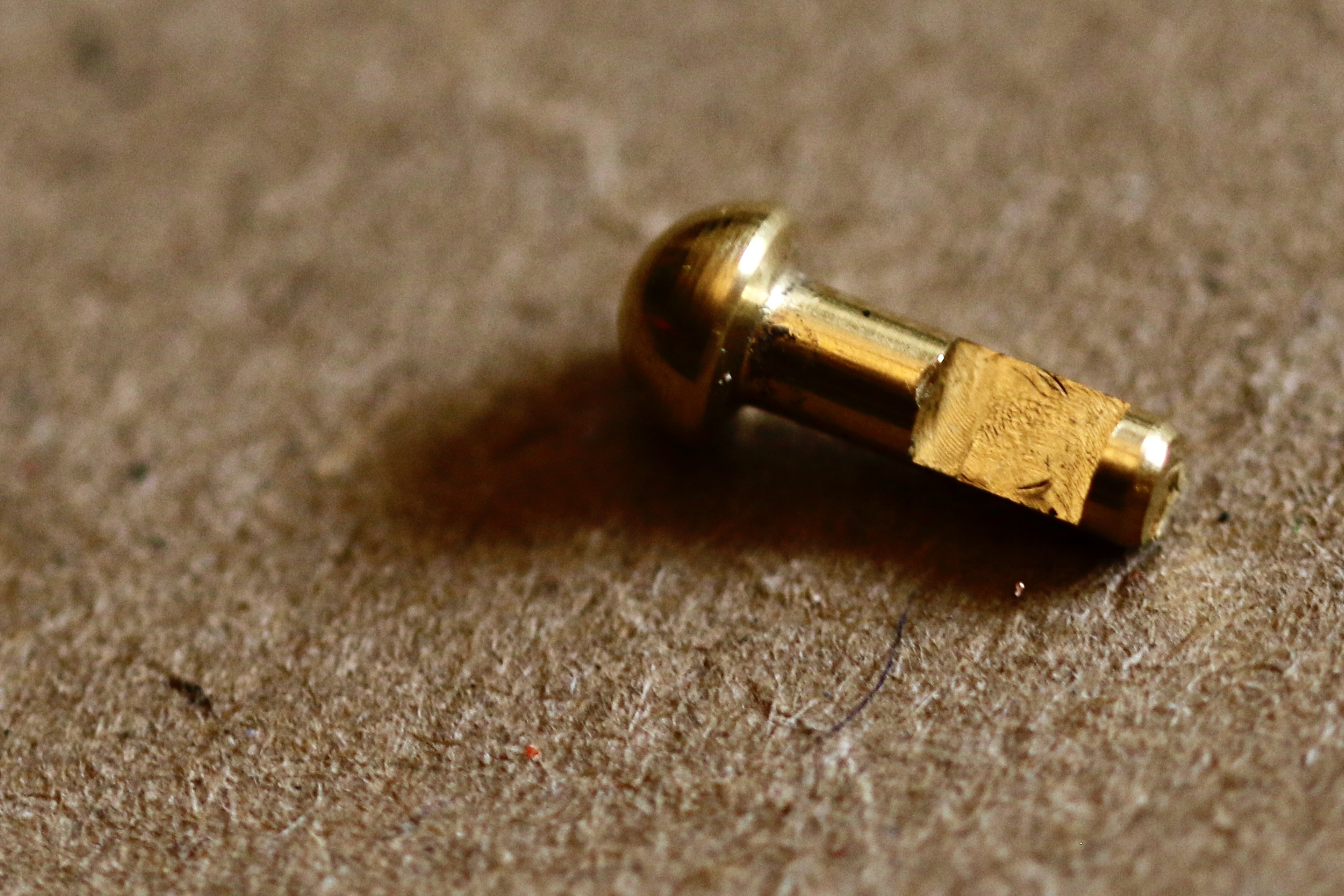
This one is stone-washed, which is why it looks worn in. You can order them polished, too—though contact with your skin will immediately begin undoing that process and adding character to the finish.
The inner sleeve can be a contrasting metal or the same material. And you can have the bolt stand out or blend in by mixing and matching materials.
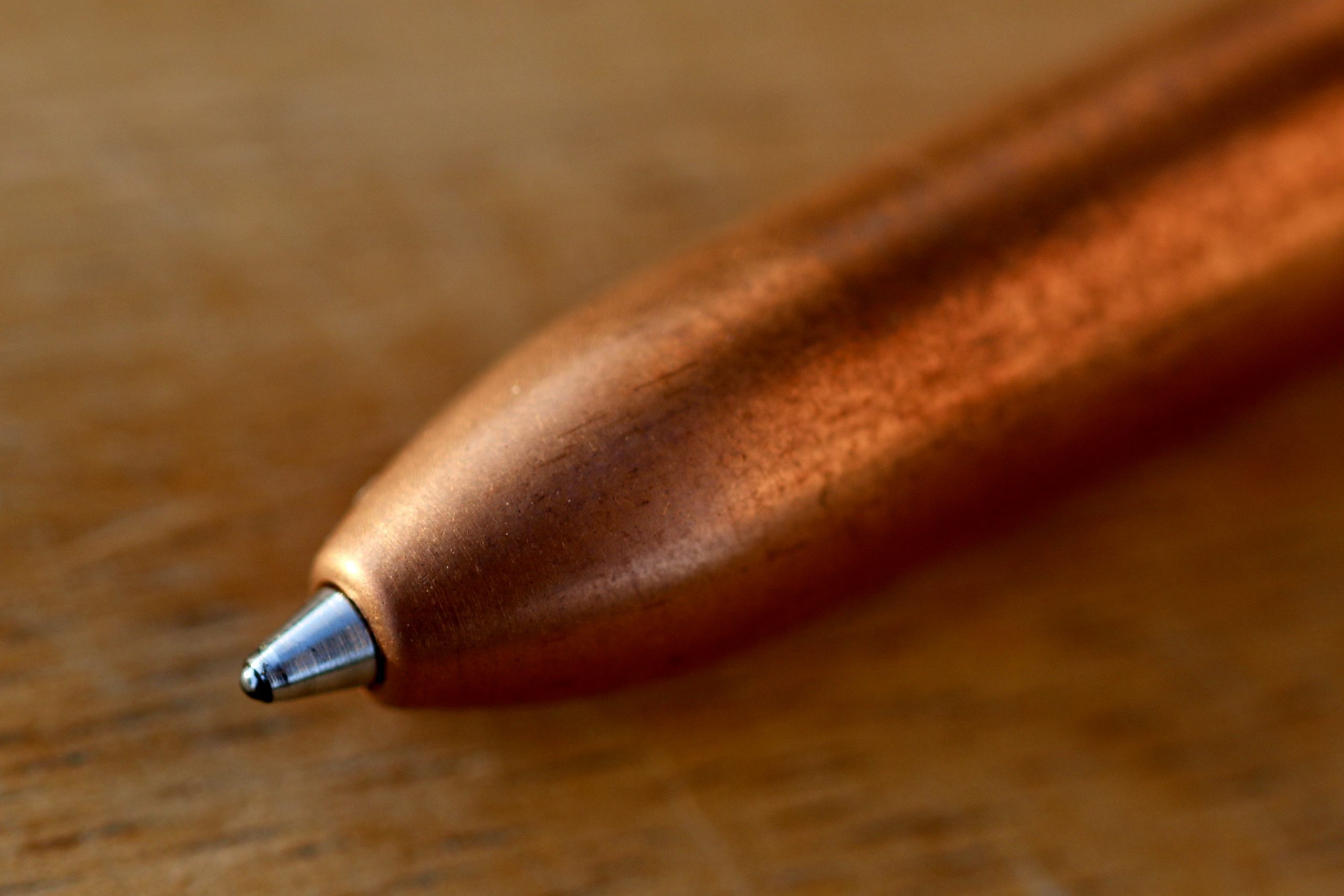
The bolt nob can be cut in several geometric shapes, too. Each would have a slightly different feel but would be roughly the same size. They’re turned, too—a close examination reveals some minute tool marks.
Prices on these are incredibly reasonable. This pen starts at $60. That’s a steal for just about anything that’s handmade, and certainly for a well-built tool that is meant to be used daily.


